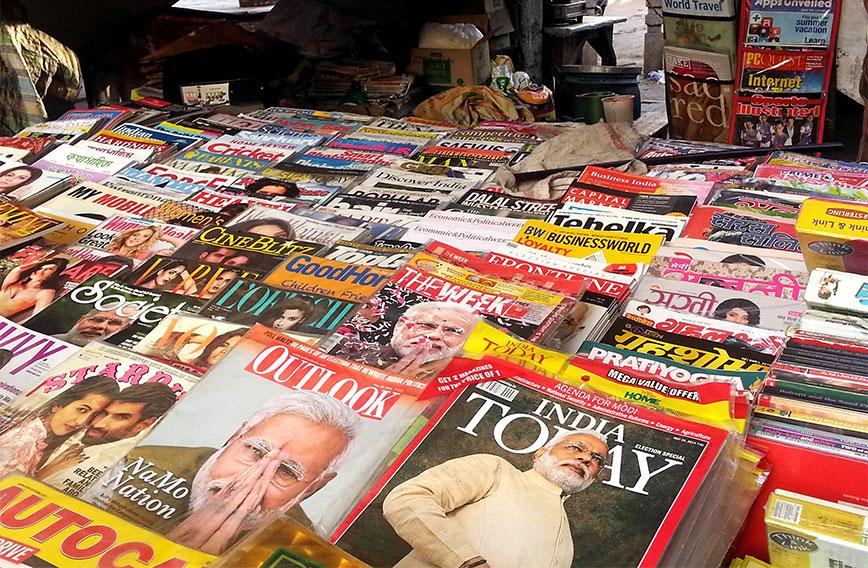

SANJAYA BARU
THE problems for democracies, observed an editorial in the inaugural issue of the national newsmagazine India Today (December 1975), “is to decide where freedom begins and responsibility ends....What a handful would consider suppression, millions of Indians do seem to consider emancipation.” That quotable quote is not about India today. It was, in fact, India Today magazine’s view half a century ago.
Launched in the midst of Prime Minister Indira Gandhi’s Emergency Rule, as I have recently recorded in my book, India’s Power Elite: Class, Caste and a Cultural Revolution, the first issue of the newsmagazine sang paeans to Indira’s democratic authoritarianism, very similar to what it now does in praising Prime Minister Narendra Modi’s.
The magazine quotes an unnamed political leader to say, “We can use the Emergency to boost tourism in India. The slogan for publicity campaigns should be: Come to India to see the Emergency. There has never been anything like this in any democracy before.”
The editors of this newly launched magazine would not rest content with such endorsement of the stifling of media freedom. India Today’s editors made bold to declare: “There has been worldwide concern about the curbs put on the press since the Emergency. Mrs Gandhi has repeatedly said that she does not want to muzzle the press. But, the problem for democracies is to decide where freedom begins and responsibility ends....” The magazine then assured its readership that “As the Emergency continues, press censorship rules are gradually being relaxed to allow constructive criticism of government policies.”
Being anti-government was regarded even then as being anti-national. The BBC was targeted then. It is targeted now. In the recent past many journalists have suffered the consequences of reporting news that has been critical of elected politicians in power, of government functionaries and institutions. It has become commonplace for many among the middle class to take the view that the media should only do positive journalism and eschew negative journalism. “Constructive”, as India Today’s editors said in 1976.
There is, however, one fundamental difference between then and now. During the Emergency the Union and State governments had officials designated to handle censorship. Today, censorship is less transparent but what is worse is the high degree of self-censorship. It used to be said of the media even during the Emergency that ‘when asked to bend, they were willing to crawl.” Today, many in the media crawl with pride.
When a former governor of a major state goes on record to raise important questions about the role of senior central ministers in a situation relating to national security, prominent media persons taunt the gentleman wondering if it is a case of sour grapes. The issue at hand itself gets brushed under the carpet. The focus is shifted to the credibility of the person in question. All this is done brazenly, without embarrassment.
If the two media institutions I name in this column have come to epitomize submission to authority, there are many more that indulge in self-censorship in subtle and inobtrusive form. As one editor told me, “say what you would like to, but please do not mention any names.” While there is some attention being paid to overt and covert censorship and self-censorship at the national level, little attention is paid to the far worse situation at the provincial level.
Most media moguls in Indian language media are members of the local ruling dispensation, and of local land, real estate and liquor mafias. Their stranglehold on media is more direct and devastating. The provincial media may be free to openly criticize the opponents of the local ruling dispensation but will not be allowed to turn a critical gaze at the government next door. Thus, a Kolkata paper can freely criticize a Mumbai politician but rarely feels free to be able to criticize a local politician. Freedom is assured as long as the media lens is outward and focused at distant threats to media freedom.
If print is in bad shape, television is worse off. Television news anchors have become entertainers both on screen and off-screen at glitzy media events where media moguls and senior journalists compete with each other to flatter ministers of the government and play courtier. Prominent newspersons display with pride the personal attention that the PM or his chosen few are willing to bestow on the journalist by merely turning up at a wedding reception or a media event.
Another media mogul that I refer to in my book (India’s Power Elite) is Samir Jain of the Times of India group. In the 1990s a joke that many of us working at Times House shared was an alleged remark of Jain. Asked if the Times of India was pro-establishment or anti-establishment, I recalled, it was jokingly said that Jain’s reply was, “We are neither pro-establishment nor anti-establishment. We are The Establishment.”
The joke was told as a sign of how seriously the newspaper took itself. When Arnab Goswami joined Times Now as an anchor, he was encouraged by the Jains to declare at prime time, “The Nation Wants to Know.” The channel spoke for The Nation. The same venerable institution now plays courtier in the present ruling dispensation’s daily Darbar. The usually reticent senior Jain became voluble at a recent media event in the presence of the PM, offering him arguments in support of the ruling political party’s ideology. The media will not question the ideology of the ruler. It will henceforth defend the ideology and propagate it. Four Legs Good. Two Legs Bad.
Sanjaya Baru is a writer and Distinguished Fellow at the United Service Institution of India.
Comments
Currently there are no Comments. Be first to write a comment!



